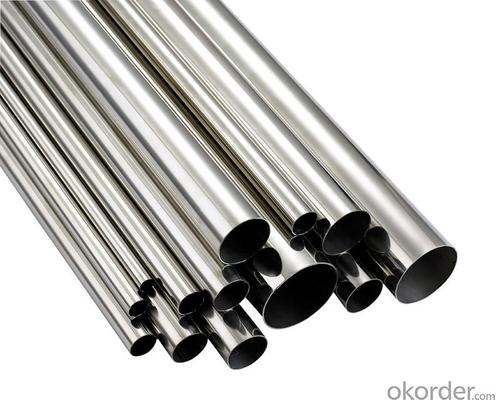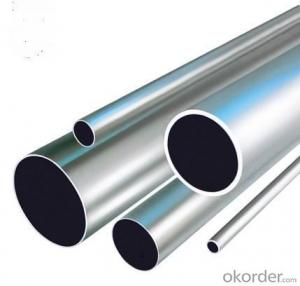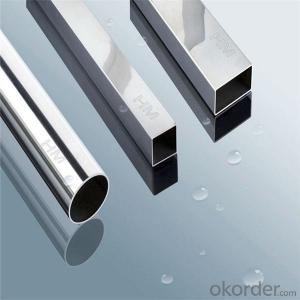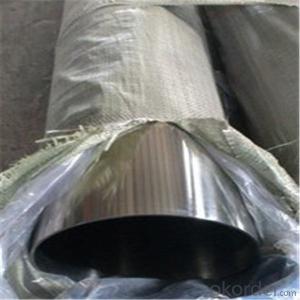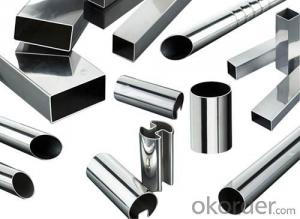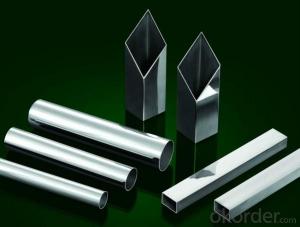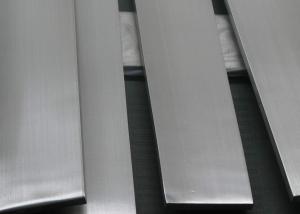STAINLESS STEEL PIPES 201 pipe
- Loading Port:
- China Main Port
- Payment Terms:
- TT OR LC
- Min Order Qty:
- -
- Supply Capability:
- -
OKorder Service Pledge
OKorder Financial Service
You Might Also Like
Description:
Stainless Steel Pipe
Material:
304 321 316 310
Packing:
In bundle
MOQ:
5 TONS
Comparison of standardized steels
| EN-standard Steel no. k.h.s DIN | EN-standard Steel name | SAE grade | UNS |
|---|---|---|---|
| 1.4109 | X65CrMo14 | 440A | S44002 |
| 1.4112 | X90CrMoV18 | 440B | S44003 |
| 1.4125 | X105CrMo17 | 440C | S44004 |
| | | 440F | S44020 |
| 1.4016 | X6Cr17 | 430 | S43000 |
| 1.4408 | G-X 6 CrNiMo 18-10 | 316 | |
| 1.4512 | X6CrTi12 | 409 | S40900 |
| | | 410 | S41000 |
| 1.4310 | X10CrNi18-8 | 301 | S30100 |
| 1.4318 | X2CrNiN18-7 | 301LN | |
| 1.4307 | X2CrNi18-9 | 304L | S30403 |
| 1.4306 | X2CrNi19-11 | 304L | S30403 |
| 1.4311 | X2CrNiN18-10 | 304LN | S30453 |
| 1.4301 | X5CrNi18-10 | 304 | S30400 |
| 1.4948 | X6CrNi18-11 | 304H | S30409 |
| 1.4303 | X5CrNi18-12 | 305 | S30500 |
| | X5CrNi30-9 | 312 | |
| 1.4541 | X6CrNiTi18-10 | 321 | S32100 |
| 1.4878 | X12CrNiTi18-9 | 321H | S32109 |
| 1.4404 | X2CrNiMo17-12-2 | 316L | S31603 |
| 1.4401 | X5CrNiMo17-12-2 | 316 | S31600 |
| 1.4406 | X2CrNiMoN17-12-2 | 316LN | S31653 |
| 1.4432 | X2CrNiMo17-12-3 | 316L | S31603 |
| 1.4435 | X2CrNiMo18-14-3 | 316L | S31603 |
| 1.4436 | X3CrNiMo17-13-3 | 316 | S31600 |
| 1.4571 | X6CrNiMoTi17-12-2 | 316Ti | S31635 |
| 1.4429 | X2CrNiMoN17-13-3 | 316LN | S31653 |
| 1.4438 | X2CrNiMo18-15-4 | 317L | S31703 |
| 1.4362 | X2CrNi23-4 | 2304 | S32304 |
| 1.4462 | X2CrNiMoN22-5-3 | 2205 | S31803/S32205 |
| 1.4539 | X1NiCrMoCu25-20-5 | 904L | N08904 |
| 1.4529 | X1NiCrMoCuN25-20-7 | | N08926 |
| 1.4547 | X1CrNiMoCuN20-18-7 | 254SMO | S31254 |
Stainless steel’s resistance to corrosion and staining, low maintenance and familiar lustre make it an ideal material for many applications. There are over 150 grades of stainless steel, of which fifteen are most commonly used. The alloy is milled into coils, sheets, plates, bars, wire, and tubing to be used in cookware, cutlery, household hardware, surgical instruments, major appliances, industrial equipment (for example, in sugar refineries) and as an automotive and aerospace structural alloy and construction material in large buildings. Storage tanks and tankers used to transport orange juice and other food are often made of stainless steel, because of its corrosion resistance. This also influences its use in commercial kitchens and food processing plants, as it can be steam-cleaned and sterilized and does not need paint or other surface finishes.
Stainless steel is used for jewelry and watches with 316L being the type commonly used for such applications. It can be re-finished by any jeweler and will not oxidize or turn black.
Some firearms incorporate stainless steel components as an alternative to blued or parkerized steel. Some handgun models, such as the Smith & Wesson Model 60 and the Colt M1911 pistol, can be made entirely from stainless steel. This gives a high-luster finish similar in appearance to nickel plating. Unlike plating, the finish is not subject to flaking, peeling, wear-off from rubbing (as when repeatedly removed from a holster), or rust when scratched.
Architecture[edit]
Stainless steel is used for buildings for both practical and aesthetic reasons. Stainless steel was in vogue during the art deco period. The most famous example of this is the upper portion of the Chrysler Building (pictured). Some diners and fast-food restaurants use large ornamental panels and stainless fixtures and furniture. Because of the durability of the material, many of these buildings retain their original appearance.
Type 316 stainless is used on the exterior of both the Petronas Twin Towers and the Jin Mao Building, two of the world's tallest skyscrapers.[17]
The Parliament House of Australia in Canberra has a stainless steel flagpole weighing over 220 tonnes (240 short tons).
The aeration building in the Edmonton Composting Facility, the size of 14 hockey rinks, is the largest stainless steel building in North America.
Bridges[edit]
Cala Galdana Bridge in Minorca (Spain) was the first stainless steel road bridge.
Sant Fruitos Pedestrian Bridge (Catalonia, Spain), arch pedestrian bridge.
Padre Arrupe Bridge (Bilbao, Spain) links the Guggenheim museum to the University of Deusto.[18]
Monuments and sculptures[edit]
The Unisphere, constructed as the theme symbol of the 1964-5 World's Fair in New York City, is constructed of Type 304L stainless steel as a sphere with a diameter of 120 feet, or 36.57 meters.
The Gateway Arch (pictured) is clad entirely in stainless steel: 886 tons (804 metric tonnes) of 0.25 in (6.4 mm) plate, #3 finish, type 304 stainless steel.[19]
The United States Air Force Memorial has an austenitic stainless steel structural skin.
The Atomium in Brussels, Belgium was renovated with stainless-steel cladding in a renovation completed in 2006; previously the spheres and tubes of the structure were clad in aluminium.
The Cloud Gate sculpture by Anish Kapoor, in Chicago US.
The Sibelius monument in Helsinki, Finland, is made entirely of stainless steel tubes.
The Man of Steel (sculpture) under construction in Rotherham, England.
Other[edit]
- Automotive bodies
The Allegheny Ludlum Corporation worked with Ford on various concept cars with stainless steel bodies from the 1930s through the 1970s, as demonstrations of the material's potential. The 1957 and 1958 Cadillac Eldorado Brougham had a stainless steel roof. In 1981 and 1982, the DeLorean DMC-12 production automobile used stainless steel body panels over a glass-reinforced plasticmonocoque. Intercity buses made by Motor Coach Industries are partially made of stainless steel. The aft body panel of the Porsche Cayman model (2-door coupe hatchback) is made of stainless steel. It was discovered during early body prototyping that conventional steel could not be formed without cracking (due to the many curves and angles in that automobile). Thus, Porsche was forced to use stainless steel on the Cayman.
- Passenger rail cars
Rail cars have commonly been manufactured using corrugated stainless steel panels (for additional structural strength). This was particularly popular during the 1960s and 1970s, but has since declined. One notable example was the early Pioneer Zephyr. Notable former manufacturers of stainless steel rolling stock included the Budd Company (USA), which has been licensed to Japan's Tokyu Car Corporation, and the Portuguese company Sorefame. Many railcars in the United States are still manufactured with stainless steel, unlike other countries who have shifted away.
- Aircraft
Budd also built an airplane, the Budd BB-1 Pioneer, of stainless steel tube and sheet, which is on display at the Franklin Institute.
The American Fleetwings Sea Birdamphibious aircraft of 1936 was also built using a spot-welded stainless steel hull.
The Bristol Aeroplane Company built the all-stainless steel Bristol 188 high-speed research aircraft, which first flew in 1963.
The use of stainless steel in mainstream aircraft is hindered by its excessive weight compared to other materials, such as aluminum.
- Jewelry
Valadium, a stainless steel and 12% nickel alloy is used to make class and military rings. Valadium is usually silver-toned, but can be electro-charged to give it a gold tone. The gold tone variety is known as Sun-lite Valadium
- Q: Can stainless steel pipes be used for exhaust systems?
- Indeed, exhaust systems can utilize stainless steel pipes. Stainless steel, renowned for its exceptional resistance to both corrosion and heat, is a favored material for exhaust systems. It possesses the ability to withstand the severe temperatures and harsh circumstances to which exhaust systems are exposed, rendering it an enduring and long-lasting alternative. An added benefit of stainless steel pipes is their lightweight nature, which can enhance the performance of the exhaust system. Furthermore, stainless steel pipes can be effortlessly manipulated and molded, allowing for tailor-made adaptations to suit various vehicle models and configurations. All in all, stainless steel pipes present a dependable choice for exhaust systems, guaranteeing outstanding performance and longevity.
- Q: How do you calculate the expansion and contraction of stainless steel pipes?
- To calculate the expansion and contraction of stainless steel pipes, you need to consider the coefficient of thermal expansion (CTE) of the material and the change in temperature. The formula for calculating the thermal expansion or contraction of a stainless steel pipe is: ΔL = L * CTE * ΔT Where: ΔL is the change in length of the pipe L is the original length of the pipe CTE is the coefficient of thermal expansion of stainless steel ΔT is the change in temperature By plugging in the values for length, CTE, and temperature change into this formula, you can determine the expansion or contraction of the stainless steel pipe.
- Q: Can stainless steel water pipes be cooled and bent?
- Stainless steel pipe is a kind of hollow long strip round steel, mainly used in petroleum, chemical, medical, food, light industry, machinery, instrument and other industrial pipeline and mechanical structure parts.
- Q: Are stainless steel pipes suitable for chemical reactors?
- Indeed, chemical reactors find stainless steel pipes to be a fitting choice. Stainless steel, known for its exceptional durability and resistance to corrosion, proves itself as an optimal material for managing a wide range of chemicals and corrosive substances. It exhibits remarkable resistance to both extreme hot and cold temperatures, as well as protection against oxidation and scaling. Stainless steel pipes demonstrate their ability to endure the harsh conditions within a chemical reactor, including aggressive chemicals and high pressure. Furthermore, they boast an effortless cleaning and maintenance process, guaranteeing the integrity and longevity of the chemical reactor system. Ultimately, stainless steel pipes offer a dependable and secure solution for the transportation of chemicals in chemical reactors.
- Q: Can stainless steel pipes be used in high-pressure applications?
- Yes, stainless steel pipes can be used in high-pressure applications. Stainless steel is known for its excellent corrosion resistance, durability, and strength, making it an ideal material for handling high-pressure fluids or gases. The high-pressure resistance of stainless steel pipes is due to their high tensile strength and ability to withstand extreme conditions without deformation or failure. Additionally, stainless steel pipes can maintain their properties at both high and low temperatures, ensuring their reliability and performance in high-pressure applications.
- Q: Can stainless steel pipes be used for gas distribution?
- Yes, stainless steel pipes can be used for gas distribution. Stainless steel is a highly durable and corrosion-resistant material, making it suitable for transporting gas safely and efficiently.
- Q: Can stainless steel pipes be used for hydraulic systems?
- Yes, stainless steel pipes can be used for hydraulic systems. Stainless steel is a highly durable and corrosion-resistant material, which makes it suitable for use in hydraulic systems. It is capable of withstanding high pressure and extreme temperatures, making it a reliable choice for hydraulic applications. Stainless steel pipes also have excellent resistance to chemical and environmental factors, ensuring the longevity and reliability of the hydraulic system. Furthermore, stainless steel pipes offer excellent dimensional stability, which is crucial for maintaining the integrity and efficiency of the hydraulic system. Overall, stainless steel pipes are a popular choice for hydraulic systems due to their durability, corrosion resistance, and high performance capabilities.
- Q: What are the advantages of using stainless steel pipes in the automotive industry?
- There are several advantages of using stainless steel pipes in the automotive industry. Firstly, stainless steel pipes offer excellent corrosion resistance, making them highly durable and long-lasting. This is particularly important in vehicles, as they are constantly exposed to various environmental conditions, such as rain, snow, and road salt. By using stainless steel pipes, manufacturers can ensure that the vehicle's exhaust system and other components remain in optimal condition for a prolonged period. Secondly, stainless steel pipes have remarkable high-temperature resistance. They can withstand extreme heat generated by the engine and exhaust system without corroding or deforming. This makes them ideal for use in various parts of the vehicle, including exhaust manifolds, catalytic converters, and mufflers. Furthermore, stainless steel pipes offer superior strength and impact resistance. They can withstand heavy vibrations and shocks that occur during the vehicle's operation. This is crucial for maintaining the structural integrity of the vehicle and preventing any potential failures or leaks. In addition, stainless steel pipes have excellent formability, allowing them to be easily shaped and fabricated into complex designs. This makes them highly versatile and suitable for various automotive applications, such as fuel lines, coolant systems, and hydraulic systems. Their ability to be easily formed also reduces the need for additional components, leading to cost savings in the manufacturing process. Moreover, stainless steel pipes have aesthetic appeal. They provide a sleek and polished appearance that enhances the overall design of the vehicle. This is particularly important for luxury vehicles and sports cars, where visual appeal plays a significant role in attracting customers. Lastly, stainless steel pipes are environmentally friendly. They have a high scrap value and can be recycled without any loss in quality. This promotes sustainability and reduces the demand for new raw materials, making them an eco-friendly choice for the automotive industry. Overall, the advantages of using stainless steel pipes in the automotive industry include corrosion resistance, high-temperature resistance, strength and impact resistance, formability, aesthetic appeal, and environmental sustainability. These benefits make stainless steel pipes a preferred choice for various applications, contributing to the overall reliability and performance of vehicles.
- Q: How do you choose the right stainless steel grade for a specific application?
- When choosing the right stainless steel grade for a specific application, there are several factors to consider. Firstly, it is important to understand the environment in which the stainless steel will be used. Consider factors such as temperature, humidity, and exposure to corrosive substances. Different stainless steel grades have varying levels of resistance to corrosion, so selecting a grade that is suitable for the specific environment is crucial. Secondly, the required mechanical properties of the stainless steel should be evaluated. This includes the desired strength, ductility, and toughness. Different stainless steel grades have varying mechanical properties, so it is important to choose a grade that meets the specific requirements of the application. Additionally, the fabrication process should be taken into account. Some stainless steel grades are easier to weld, machine, or form than others. Therefore, it is important to select a grade that is compatible with the intended fabrication techniques. Furthermore, cost considerations should be taken into consideration. Different stainless steel grades have varying price points, so it is important to choose a grade that fits within the budget of the specific application. Lastly, consulting with a materials engineer or a stainless steel supplier can provide valuable expertise and guidance in choosing the right grade. These professionals can help evaluate the specific requirements of the application and recommend the most suitable stainless steel grade. In conclusion, choosing the right stainless steel grade for a specific application requires considering factors such as the environment, mechanical properties, fabrication process, cost, and seeking expert advice. By taking these factors into account, one can make an informed decision and select the most appropriate stainless steel grade for their specific application.
- Q: Can stainless steel pipes be insulated with ceramic?
- Yes, stainless steel pipes can be insulated with ceramic. Ceramic insulation is commonly used in industrial applications where high temperatures are involved. Ceramic insulation provides excellent heat resistance and thermal insulation properties. It can withstand extreme temperatures and is highly effective in reducing heat transfer. Ceramic insulation is often used to insulate pipes, tanks, furnaces, and other equipment in various industries. When applied to stainless steel pipes, ceramic insulation helps to maintain the temperature of the fluid inside the pipes and prevents heat loss or gain. It also provides protection against corrosion and mechanical damage. Overall, ceramic insulation is a suitable option for insulating stainless steel pipes in a wide range of applications.
Send your message to us
STAINLESS STEEL PIPES 201 pipe
- Loading Port:
- China Main Port
- Payment Terms:
- TT OR LC
- Min Order Qty:
- -
- Supply Capability:
- -
OKorder Service Pledge
OKorder Financial Service
Similar products
Hot products
Hot Searches
Related keywords

